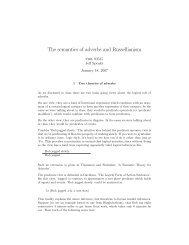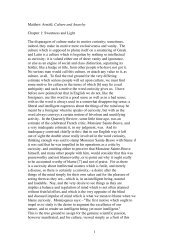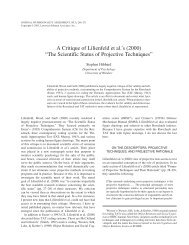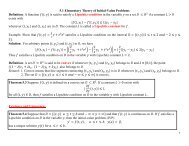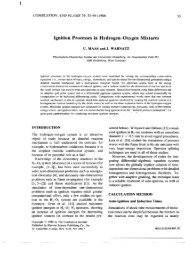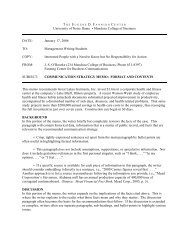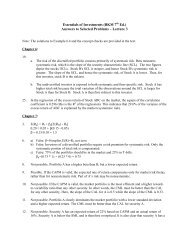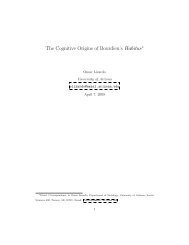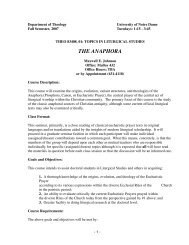Left endpoint approximation
Left endpoint approximation
Left endpoint approximation
You also want an ePaper? Increase the reach of your titles
YUMPU automatically turns print PDFs into web optimized ePapers that Google loves.
Extra Example Find the area under the curve y = x 3 on the interval [0, 1].<br />
We know that A = limn→∞ Rn, where Rn is the right <strong>endpoint</strong> <strong>approximation</strong> using n approximating<br />
rectangles.<br />
We must calculate Rn and than find limn→∞ Rn.<br />
1. We divide the interval [0, 1] into n strips of equal length ∆x = 1−0 = 1/n. This gives us a partition<br />
n<br />
of the interval [0, 1],<br />
x1 = 0, x2 = 0 + ∆x = 1/n, x3 = 0 + 2∆x = 2/n, . . . , xn−1 = (n − 1)/n, xn = 1.<br />
2. We will use the right <strong>endpoint</strong> <strong>approximation</strong> Rn.<br />
3. The heights of the rectangles can be found from the table below:<br />
4.<br />
5.<br />
xi x0 = 0 x1 = 1/n x2 = 2/n x3 = 3/n . . . xn = n/n<br />
f(xi) = (xi) 3 0 1/n 3 2 3 /n 3 3 3 /n 3 . . . n 3 /n 3<br />
Rn = f(x1)∆x + f(x2)∆x + f(x3)∆x + · · · + f(xn)∆x =<br />
<br />
1<br />
n3 <br />
1<br />
n +<br />
3 2<br />
n3 <br />
1<br />
n +<br />
3 3<br />
n3 <br />
1<br />
3 n<br />
+ · · · +<br />
n n3 <br />
1<br />
n =<br />
n i<br />
=<br />
3 1<br />
=<br />
n4 n4 n<br />
i 3 = 1<br />
n4 2 n(n + 1)<br />
2<br />
A = lim<br />
n→∞<br />
1<br />
n4 <br />
i=1<br />
i=1<br />
2 n(n + 1) n<br />
= lim<br />
2<br />
n→∞<br />
2 (n + 1) 2<br />
4n4 1 (n + 1)<br />
= lim · ·<br />
n→∞ 4 n<br />
(n + 1)<br />
n<br />
9<br />
= 1<br />
4 .<br />
(n + 1)<br />
= lim<br />
n→∞<br />
2<br />
4n2



